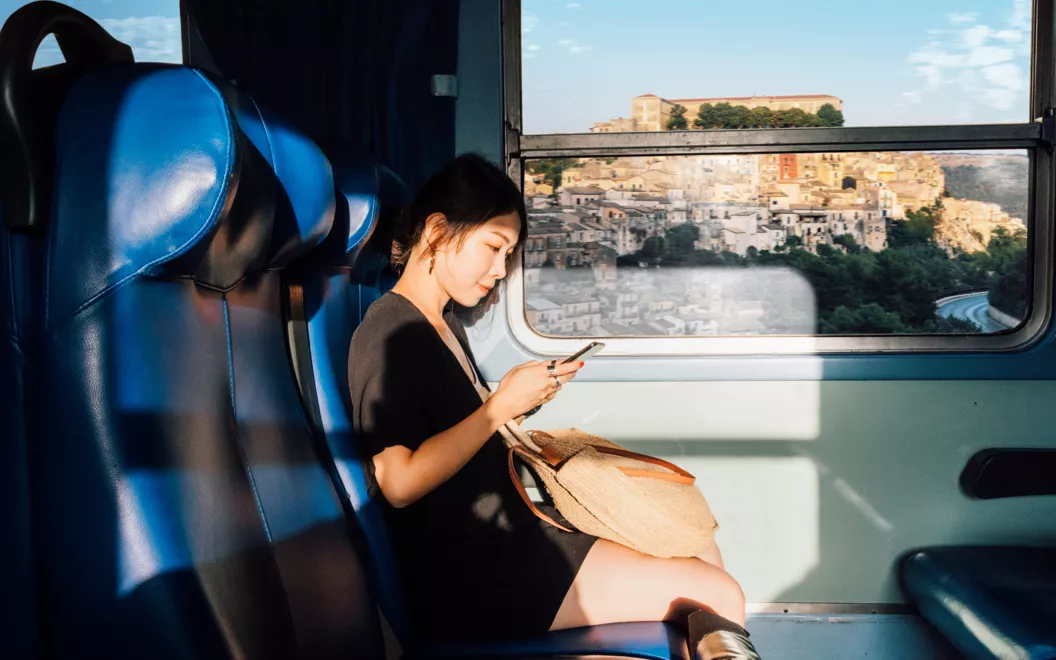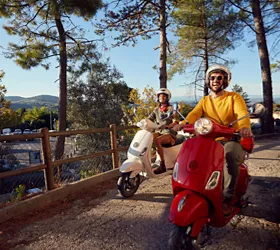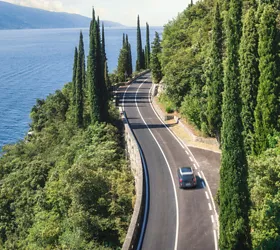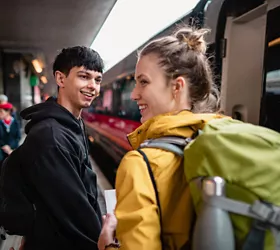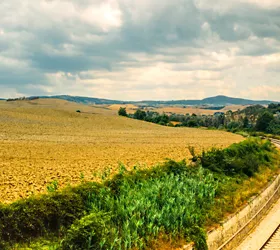How to get around and travel in Italy
Choose how to move around
A well-developed railway network makes it possible to reach even the most remote locations in Italy while enjoying unique scenery.
Travelling between big cities is even easier, thanks to high-speed trains in Italy: you can reach Rome from Milan in just over three hours. And you can do all this in comfort, thanks to the many services available on board, such as free Wi-Fi, catering, assistance for disabled people, childcare, transport for pets and bicycle storage.
You can plan your travels, for tourism or business, by choosing from among more than three hundred daily connections offered by the Italian railway companies Trenitalia and Italo Treno (NTV). You can purchase tickets online on the websites of these two companies, at travel agencies or at railway station ticket offices.
Before boarding the train, we recommend checking whether you need to stamp your ticket at one of the machines at the station.
In addition to high-speed trains, there are also plenty of connections served by regional and intercity trains, for example, which allow you to reach the whole of Italy, including small towns, and enjoy a holiday at the seaside or in the mountains while travelling sustainably.
European driving licences are recognised in Italy. Citizens travelling from non-EU countries need to be in possession of an international driving permit (IDP).
A comprehensive motorway network, identifiable by green signs, crosses all the Italian regions. Two main motorways connect northern and southern Italy:
- The Autostrada del Sole (the A1, which passes through Milan, Bologna, Florence, Rome and Naples)
- The Adriatica (the A14, linking Bologna, Ancona, Pescara, Bari and Taranto).
Tolls are charged on motorways: you can pay by cash or credit card. Alternatively, there are faster methods, such as:
- Viacard cards: a magnetic card that can be used at automatic and manual toll gates or handed to the toll booth attendant.
- the Telepass: the most practical and fastest automatic payment system that charges the fee to the user based on remote electronic recognition: it allows you to pay without stopping at the toll station, avoiding queues.
For information on weather conditions, toll costs or traffic, you can stop at the Punti Blu (Blue Points), located at the main motorway junctions, check the official website of the Società Autostrade or call the Call Centre Viabilità on 803.111, which operates 24/7.
An alternative to motorways is the network of state roads, marked by blue signs. Free of charge, with one or two lanes, these are secondary routes that allow you to enjoy the natural beauty of Italy: they are less speedy, but they make the journey much more interesting.
Gas station and charging stations in Italy
Refuelling
Petrol (unleaded, diesel) and gas (LPG or natural gas) stations can be found practically everywhere, both on the motorway network and on secondary roads. Along the main motorways and in several towns and cities – not necessarily the largest – you can now also find fast charging stations for hybrid or electric vehicles.
Parking
Parking areas in large cities are marked by stripes of various colours: white stripes usually indicate free parking, yellow stripes indicate reserved parking (disabled, taxis, etc.), and blue stripes indicate paid parking. The price of the latter varies depending on the city and, in some cases, on the area. We recommend checking the information on signs and pay stations to find out the times and days when it is compulsory to pay for parking, as well as the hourly cost of parking.
Travelling by air in Italy is easy, thanks to a wide range of flights and carriers. There are plenty of connections between cities, as well as flights connecting mainland Italy with Sicily, Sardinia and the smaller islands. There are about 40 small and medium-sized airports in all the Italian regions (except Molise and Basilicata).
The main Italian airlines are:
- ITA
- Air Dolomiti
- Neos.
Italy is the perfect destination for cyclists, both thanks to its geography, which features elevation differences within everyone’s reach among unique landscapes, and because it is possible to use other means of transport without ever having to leave your bicycle behind. Two-wheel bicycles can be taken on all trains marked with a large bicycle icon.
Only one bicycle may be carried free of charge on the train (disassembled and contained in a suitably closed bag, or a folding bike), and placed in the spaces provided for luggage. If there is not enough space, it can be placed elsewhere, as long as it is not in the way or inconvenient for other travellers or the train staff. In any case, the dimensions of the bicycle must not exceed 80x110x45 cm.
If you do not have a folding bike and need to transport an assembled bicycle, you can enquire at the ticket office for the times of trains that offer a bike transport service and any fares that may apply.
All ferries and ships offer free transport for bicycles.
Buses and trams circulate daily around Italian cities, connecting historic centres and suburbs, and suburban areas, connecting to smaller towns and villages. It is compulsory to purchase a ticket at an authorised sales outlet – official corner shops, newsagents and bars – before boarding. Remember to validate it once you board. Bus and tram services are very frequent from Monday to Friday, with end of service times varying by area. In large cities there is often a night service, with reduced frequency. At weekends, the number of available trips decreases, but the duration of the evening service is extended.
In Milan, Rome, Naples, Brescia, Turin, Catania and Genoa, you can travel around swiftly by underground metro. Other Italian cities have mass rapid rail or tram lines, similar to traditional metros. During the week, the metro runs constantly, and end of service times vary between cities. At weekends, the number of available trains and end of service times change.
For quick trips, especially around cities, taxis are a viable option in Italy. This service can be found in larger cities and tourist centres (more frequently in the high season), but also in smaller villages, thanks to app-based management.
In Italy, authorised taxis are white in colour and must have “Taxi” written on the roof. They must be equipped with a fare meter that indicates the real-time cost of the journey, to which extra costs for luggage, public holidays, night travel and extra-urban routes (as is often the case for journeys to airports) must subsequently be added. To book a taxi, you can go to one of the designated areas marked by yellow lines or an orange sign, or call the radio taxi numbers, which vary from city to city.
A single, pay-as-you-go taxi number – 892192 – is active throughout the country, which sorts requests to more than sixty radio taxi companies, covering about 70% of the available vehicles in Italy. In some cities, it is also possible to book a taxi via apps that you can download to your smartphone.
Alternatively, there are many official chauffeur-driven car hire (NCC) agencies that you can turn to for city or medium-long-distance travel.
A word of advice: always be wary of anyone offering taxi services on arrival in the city or at the airport or station: these may be unauthorised taxi drivers who should be avoided. In Italy, taxis have easily identifiable dedicated area and drivers do not go around looking for customers.

